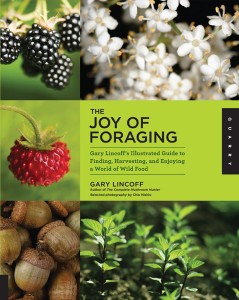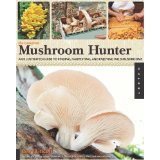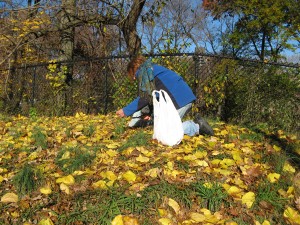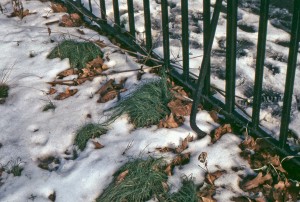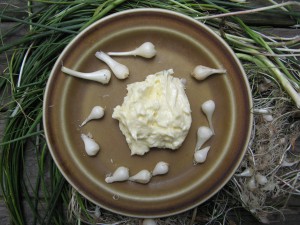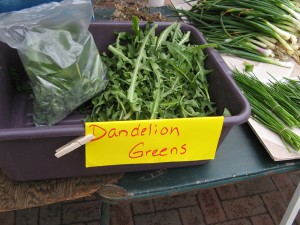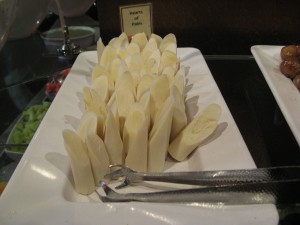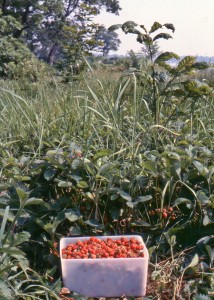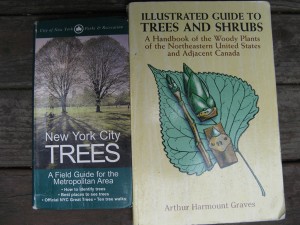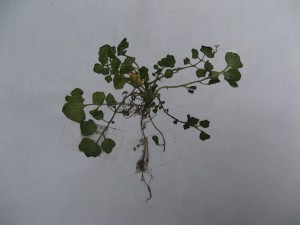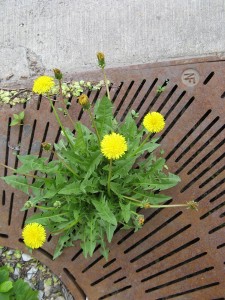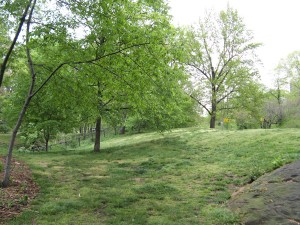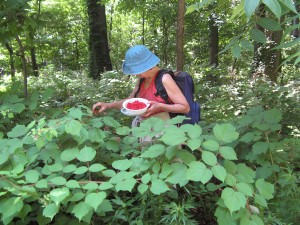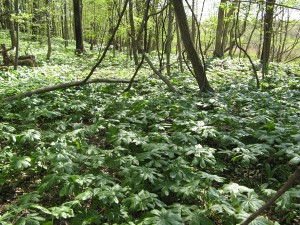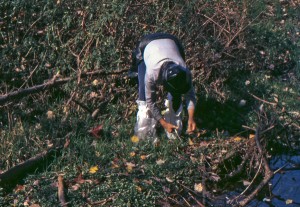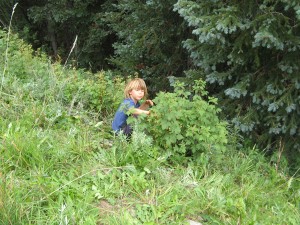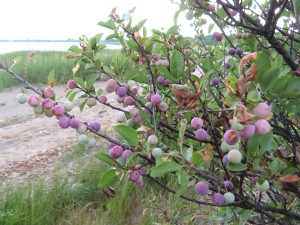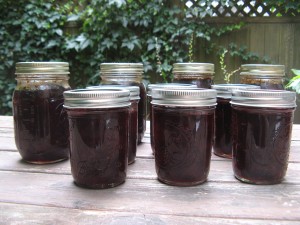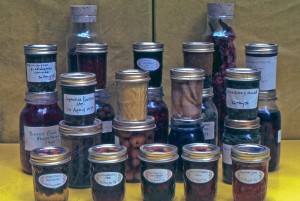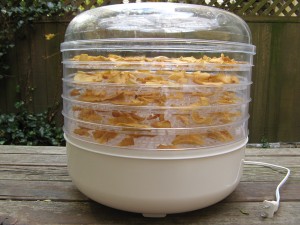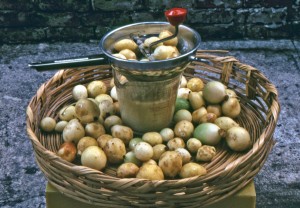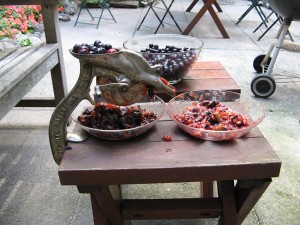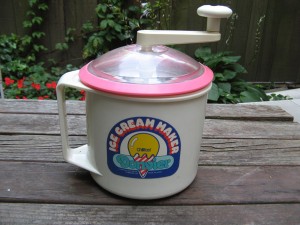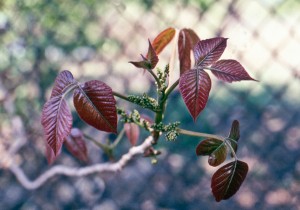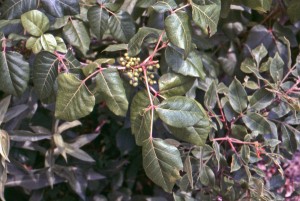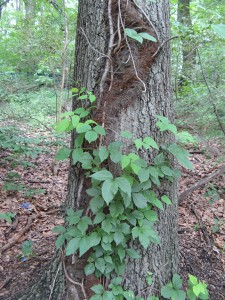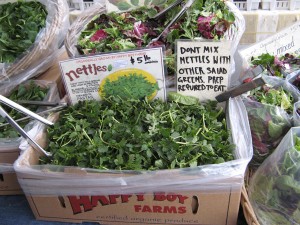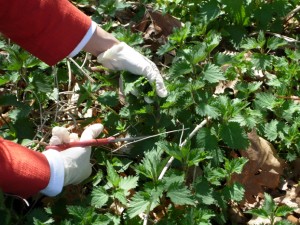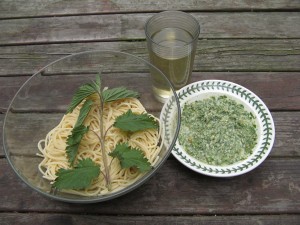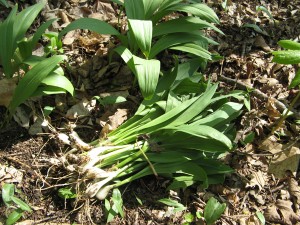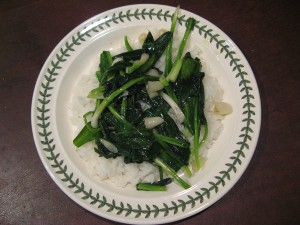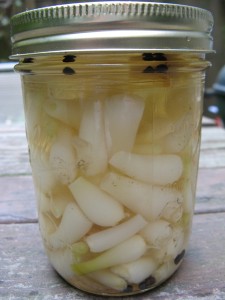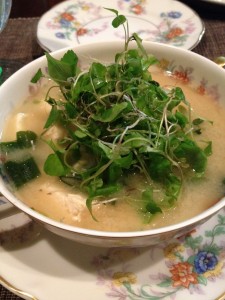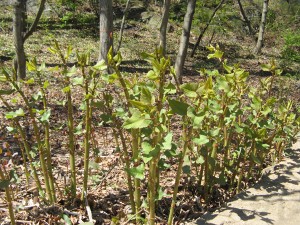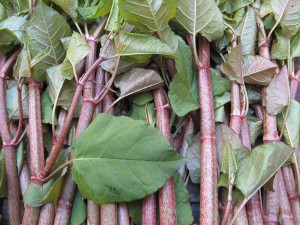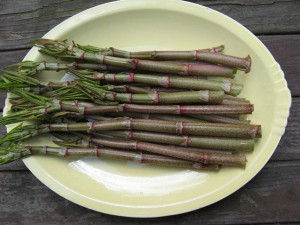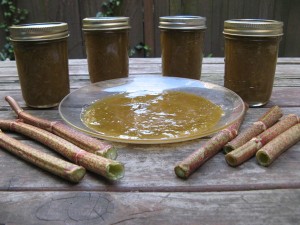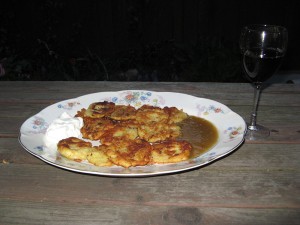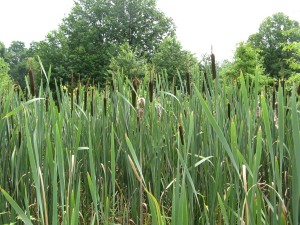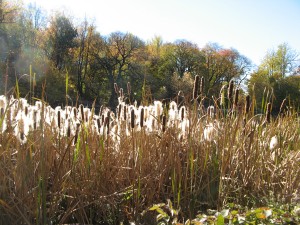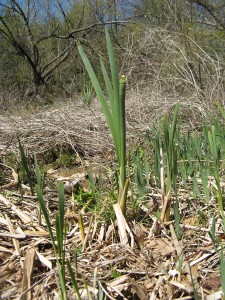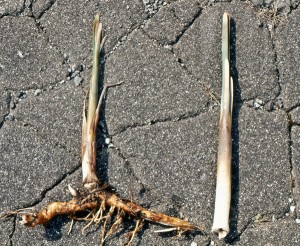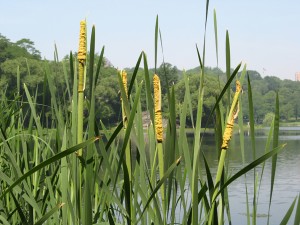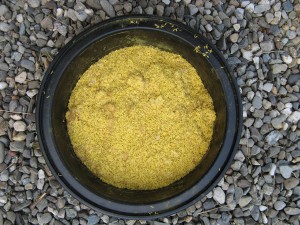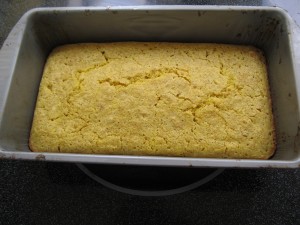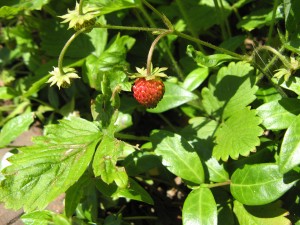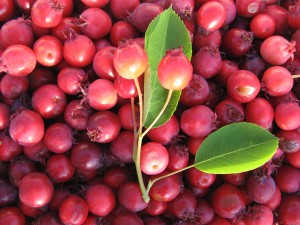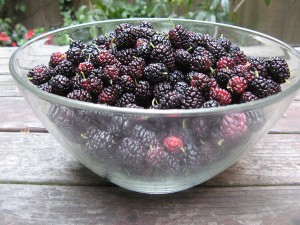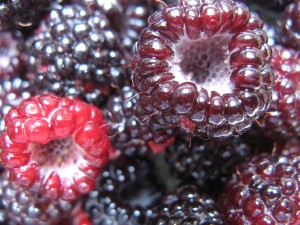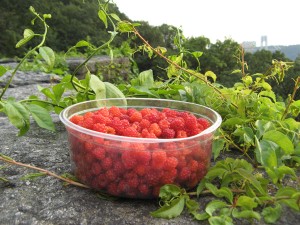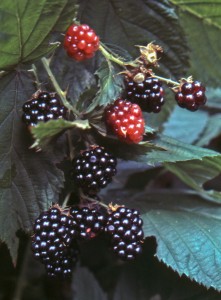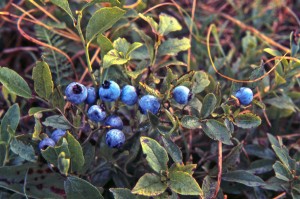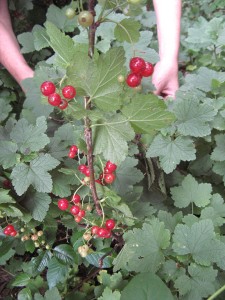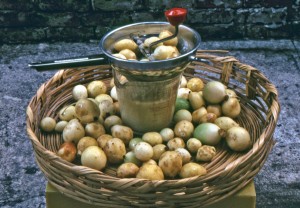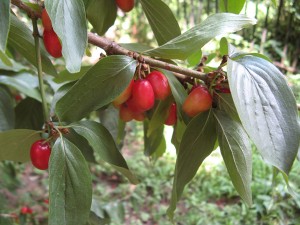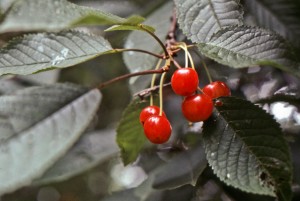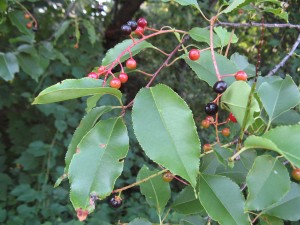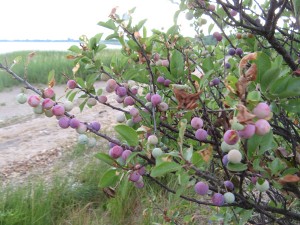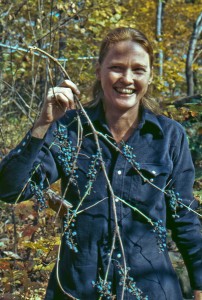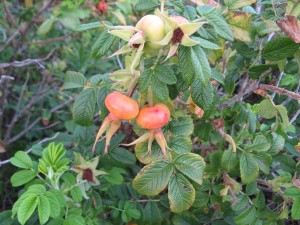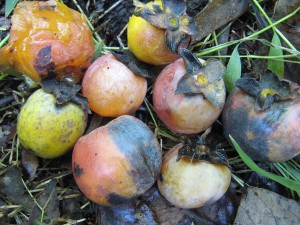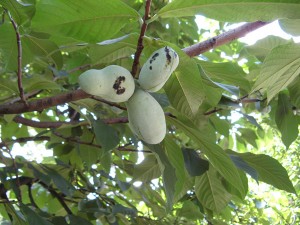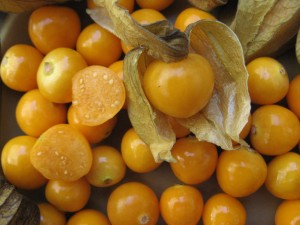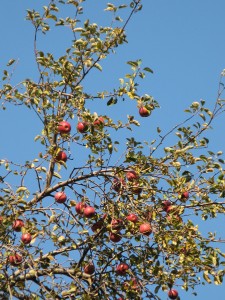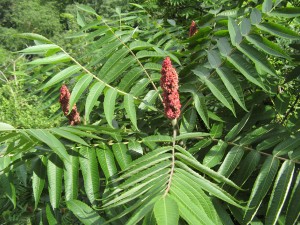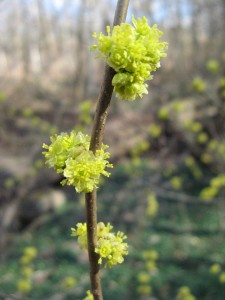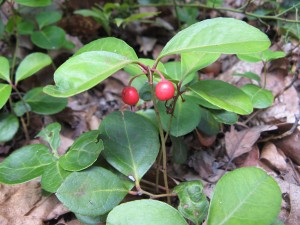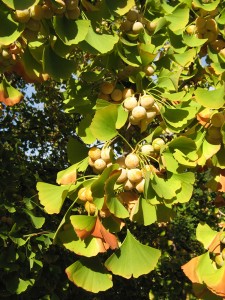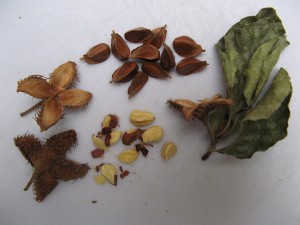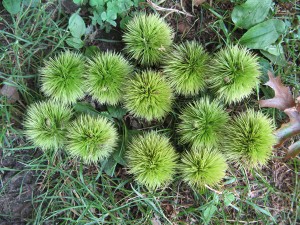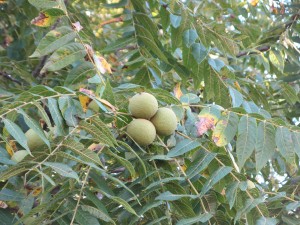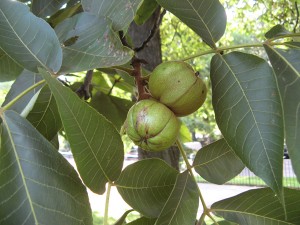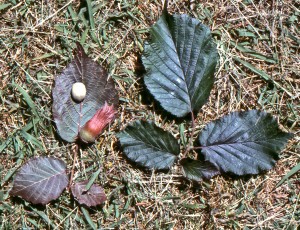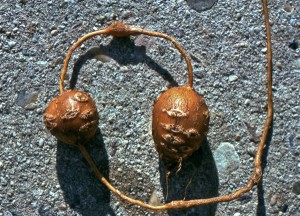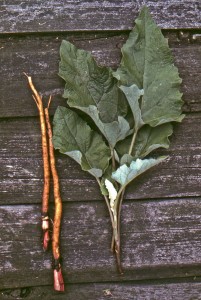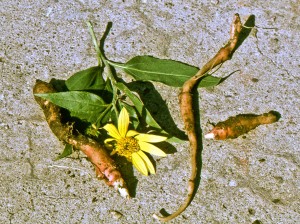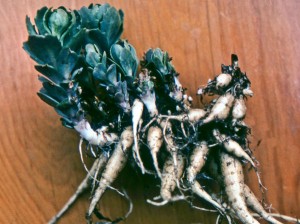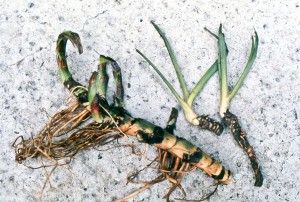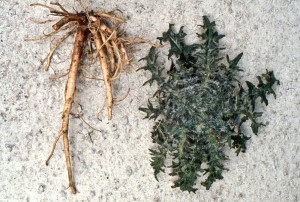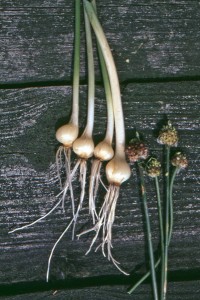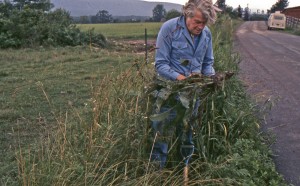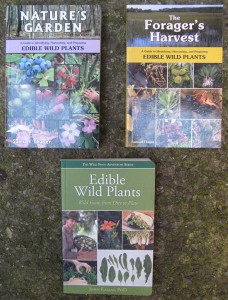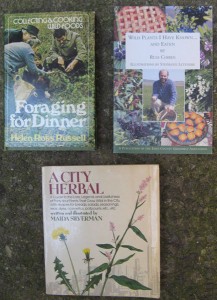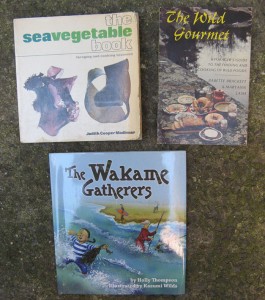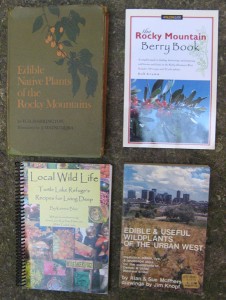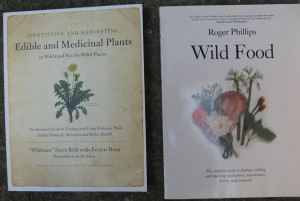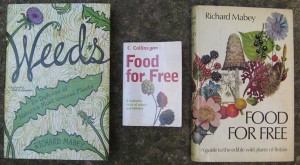In addition to this page, “The Joy of Foraging” has a dedicated Facebook page. On Facebook, just search for “The Joy of Foraging,” and you’ll find some photos and information and ways to interact with me about foraging. Hope you like it.
There is also a companion volume just on wild mushrooms – THE COMPLETE MUSHROOM HUNTER -
CONTENTS of this website page…..(Scroll down to read)
INTRODUCTION……
GREENS……
BERRIES…..
NUTS…..
ROOTS, TUBERS, RHIZOMES, and BULBS
A MISCELLANY OF EDIBLE WILD PLANT BOOKS
INTRODUCTION……
Foraging is something you can do. You can do it at home, around the house, or in local parks, even in farmers’ markets. You can even forage in restaurants, especially when you are trying out unfamiliar foreign cuisines [What is that green stuff on the plate?] . You can also forage along seashores, high in the mountains, along the Amazon River, just about anywhere.
["The Joy of Foraging" is about hunting for edible wild plants, wherever they can be found. And it's about what you can do with what you find. This page serves as a introduction to the book as well as an extension of it. It will also allow you to ask questions and get answers about the edible wild plants in your neck of the woods.]
For example, FORAGING IN A CITY PARK you can gather wild garlic (Allium vineale) in the fall…..
Or, in the winter – even in the snow!
Or, in the spring when the leaves are like chives that can be scissored into salads or added to soups, and the bulbs are big enough to mash into butter to make a spreadable garlic butter!
Or, FORAGING IN A FARMERS’ MARKET. Everyone knows dandelions, but not everyone wants to pick them “in the wild.” Or, you might not trust yourself to identify it when it’s not in flower. So, go to the farmers’ market. Here’s dandelion for sale. There are more than 50 edible wild plants that can be found for sale in farmers’ markets or in ethnic markets, like Asian markets, which is an adventure in itself.
FORAGING ABROAD….even in RESTAURANTS. If you’ve always wanted to try heart of palm salad one way to do it is to go to the source, in this case the Amazon, and hunt it with a guide.
Or you can go to a Brazilian restaurant and you’ll likely find it on the salad bar if you hunt a bit for it.
- – - – - – - – - – - – - – - – - – - – - – -
SEASONAL AVAILABILITY : Whether you are foraging for edible wild plants in local parks or farmers’ markets or even hunting for hard to find edibles in restaurants, you soon discover that every plant has a season of availability. While it’s true that you can buy strawberries grown in distant places nearly year-round these days, where they grow wild or where farmers are growing them, there’s a very short season available for harvesting them. This is generally true for all plants. While the plant might be around the whole growing season, the edible part that is most wanted, like the berry, might have an availability of only about two weeks or so. Some plants might have different parts that become available as an edible at different times, like cattail, which has a young shoot that is available in the early spring and a flower top not ready to be harvested until summer. The more familiar you become with what’s growing about you the more assured you’ll be about what’s available at any given time.
- – - – - – - – - - – - – - – - – - – - – - – - – - – -
FORAGING OUTSIDE – WHAT TO TAKE AND WHERE TO LOOK TO FIND EDIBLE WILD PLANTS, AND HOW TO GO ABOUT IDENTIFYING THEM BEFORE YOU TRY EATING ANY!
Let’s forage outside, say, in a local park. Here’s what you might want to take with you. In addition to a carrying container, you might want to put in it a pair of blunt-tipped scissors, a garden trowel, garden gloves, a camera, a notebook and pen to record what and just where you find something, maybe a hand lens to see parts of the plant you might need to see to identify it correctly, and plastic bags and containers to gather what you find. [I added, here, a very small guide to edible wild plants - not so much to use as to refer to in the field because you cannot remember everything.]
The value of a flat-bottomed plastic container cannot be over-emphasized. If you find a lot of berries, for example, you can eat some on the spot, perhaps, but what about the rest? Do you stuff them in your pocket? Do you put them in a plastic bag and hope they don’t turn to mush before you get home? Or, do you bring along several containers just in case you find something to gather. Like these wild strawberries.
Identifying edible wild plants sometimes needs more than a guide to these plants. Sometimes you need a standard wildflower guide or guide to identifying trees and shrubs. These guides are usually more thorough than edible wild plant guides, and can give you confidence that what you think you have found is either that or something else! Here are a pair of wildflower guides and a pair of tree guides useful in the eastern and central U.S.
Suppose you find a plant that you cannot identify in the field but would like to know what it is. Collect it. Maybe photograph it, but it’s even better to have the plant, which you can dry and press, then affix to paper with transparent tape. If you note on the pressing sheet exactly where you found it and when, you can return to the spot, maybe when the plant is in flower and easier to identify. Here’s an example of a bittercress, a Cardamine species, probably C. hirsuta, a plant in the mustard family that shares with others in this family a pungent somewhat peppery taste. Once you identify the plant, and label it, you’ll have a specimen of what it looks like so when you find something elsewhere that you think is the same thing, you can collect it and bring it home to compare to your dried specimen. Over time, this way, you can learn a great many plants.
- – - – - – - – - – - – - – - – - – - – - – - – - – - – - – - – - – - – -
PLACES TO FIND EDIBLE WILD PLANTS
CITY STREETS : Some places are better than others to forage for edible wild plants. Some places are great for finding plants, like city streets, and while plants here are abundant and give you experience in identifying edible wild plants, they’re not the healthiest places to gather plants for eating. For example, this dandelion is a great specimen, just not for eating, given its location.
CITY PARKS : A great many edible wild plants grow in city parks. Most of these are usually referred to as weeds. Parks departments don’t plant them and don’t want them. These weedy plants are common in grassy areas, along park path sides, in wood chip mulch, and in open park woods. Some of the plants the parks departments do plant are ornamental shrubs and trees. Some of these produce incredibly tasty fruit. A given park tree, like the Serviceberry (Amelanchier canadensis), for example, can produce several gallons of blueberry-like fruit when ripe, and that’s just the amount you can gather within reach. The same tree will have many more gallons of fruit well above your reach, and these are perfect for the birds that feast on them. Here is an ornamental shrub, Wineberry (Rubus phenocalasius), that spreads wherever planted, and produces a great quantity of raspberry-like fruit.
WOODS : Our woodlands abound in edible wild plants that we don’t usually find in city parks, or if we do we can often find vast stretches of these plants in open woodlands. Wild leeks (ramps), for example, or mayapples (as shown here) can appear to be growing in an almost endless profusion in some of our woods.
WETLANDS : We have an abundance of water sources in many urban / suburban parks and woodlands. We have ponds and streams and lakes and swamps, and many of these areas are ideal for some of our favorite edible wild plants. Here is watercress growing in the Bronx, NYC. Finding it is one challenge, but actually getting it without getting wet is another. It grows in moving streams, and sometimes requires boots or plastic-wrap about your legs to keep dry as you collect it. You might also find it a lot easier and much cleaner to collect it with scissors rather than trying to pull it out. The only caveat here is to know your water source. As with all plants, whether growing in soil or in water, contamination is a concern, and we need to know as much as we can about this before we gather something to eat.
MOUNTAINS : We go to the mountains for many reasons, and one of them should be because there are so many good edible plants there that you often cannot find elsewhere. For example, gooseberries are common in the Rocky Mountains but scarce at sea level . Raspberries can be grown in sea level gardens but to find them growing wild you need to go up into higher ground. Here’s a child devouring all the ripe raspberries on this plant near Telluride, Colorado.
SEASHORES : A walk along a beach looking for edible plants can be even more rewarding than being in the water. Seaweeds, for example, wash up on beaches all over the world, and some of these are harvested and used in dishes you’ll find in Asian restaurants. a few of the weedy plants that grow along the shore show up in farmers’ markets and upscale food stores. A plant like glasswort (sea beans) has become a popular seaside plant to use as a salty garnish with cooked dishes like fish. Here is a photo of beach plums growing along the shore in New York City. They are easy to spot when in flower (in May) and when the fruit is still light in color. Once it becomes a dark purple it’s easy to walk right by the plants without seeing them.
- – - – - – - – - – - – - – - – - – - – - – - – - – - – - – - – - – - -
WHAT YOU NEED ONCE GET HOME WITH WHAT YOU HAVE GATHERED :
Once you’re home you need a few items to help you process and store what you’ve been collecting, whether it’s from outdoors, or ethnic or farmer’s markets, These include some of the following: canning jars of different sizes, a food dehydrator, a food mill, a cherry pitter, even a small ice-cream maker. Here are jars with beach plum jam, a miscellany of processed edible wild plants, wild apple slices in a food dehydrator, mayapples being pulped in a food mill, and beach plums being pitted with a cherry pitter.
- – - – - – - – - – - – - – - – - – - – - – - – - – - – - – - – - – - – - – -
PLANTS TO AVOID – WHAT NOT TO TOUCH, WHAT NOT TO EAT, NOT EVEN A NIBBLE :
Unlike animals, plants cannot attack you. Some can poison you, which is why it’s important to know which plants are edible, and how to prepare the edible parts safely. There are very few plants you should not even touch. The most important of these in north temperate zones are the plants known as poison ivy, poison oak, and poison sumac. They are closely related to one another and not at all to ivy plants or oak trees. Here are a few photos of poison ivy – with red leaves in the spring, in fruit and with the rope-like vines climbing a tree.
THE POISON IVY GROUP OF PLANTS :
Examples in the CARROT FAMILY……………..to be continued……………..
Examples in the NIGHTSHADE FAMILY
Example in the BUTTERCUP FAMILY
Example in the BEAN FAMILY
Other examples of poisonous or rash-producing plants
- – - – - – - – - – - – - – - – - – - — – - – - – - – - – - — – - – - – - – - -
PLANTS TO FORAGE……….
SPRING : Springtime is the time to gather spring greens, and there are so many to choose among that you could gather a different one each day and not repeat any till summer. Examples include stinging nettle, wild leeks (ramps), Japanese knotweed, wild mallow (cheeses), pokeweed, lamb’s quarters, violets, and many more.
SUMMER : Summer is the time of the ripening of nearly all the fruits, and there are as many edible wild berries available, both in abundance and in diversity, that you’ll tire before you run out of edible wild fruit to try. Examples include wild strawberries, juneberries (serviceberries), black raspberries, wineberries, blackberries, wild raspberries, blueberries, elderberry, and many more.
FALL (and WINTER) : Nuts become ripe in the early fall, and so do some of the slower ripening fruits. In addition, a great many spring greens start appearing in the fall, and many of these over winter as basal rosettes, available for the harvesting nearly any time piled fallen leaves or fresh snow aren’t concealing their presence. Examples of nuts include acorns, beechnuts, chestnuts, hazelnuts, hickory nuts, and (black) walnuts. Fall fruits include wild apples and crabapples and hawthorn fruit, as well as persimmons and pawpaws and fall grapes, rose hips and wintergreen. Over wintering greens include wild garlic, chickweed, garlic mustard, sheep sorrel, and dock.
- – - – - – - – - – - – - – - – - – - – - – - – - – - – - – - – -
EDIBLE WILD SPRING GREENS :
NETTLES……..Stinging nettles, as they’re mostly known, are very popular spring greens, especially in Europe. The stinging hairs on all parts of the plant need not be touched if you wear gloves when you collect them. Once you put them in a pot of water, the stinging becomes inactivated. The young plants are then cooked in a little water and used in a soup, as a tea, as cooked greens, and as a pesto (as shown here, along with a glass of nettle tea made from the nettle cooking water). Stinging nettles are very common in wet areas, near ponds and rivers, and are especially good when they first come up. Nettles are now often seen in farmers’ markets, so there need be no wandering around looking for them. Still, whether foraged in the wild or at market, stinging nettles need a brief water treatment. [Urtica dioica, stinging nettles, is a species that is hard to misidentify. It has leaves that are arranged opposite to one another on the stem, which is somewhat ridged. Tiny hairs occur all over the leaves and stems. There is a narrow-leaved nettle that is similar, but any other nettle either has leaves that alternate on the stem or lack the stinging hairs that is the hallmark of this plant.]
- – - – - – - – - – - – - – - – — - – - – - -
RAMPS, also known as wild leeks and Allium tricoccum, is a plant related to leeks and onions and garlic and shallots. It occurs in moist woods in eastern North America. In early spring it sends up a pair of leaves that soon yellow and die. Afterwards, a flower stalk appears. When the leaves are developing and become full grown the bulb out of which they’re growing is enlarging so that while the leaves alone are collected in the early spring, by mid-spring leaves and bulbs are collected by many people. There are ramp festivals in several southern and mid-western states where ramps are served in as many ways as people can imagine. Ramps have become popular in high-end restaurants and can now be found for sale in up-scale groceries for $12 a pound and more. If there is a poisonous look-alike for this plant in the wild, it would be the wide-spread European Convallaria majalis, Lily of the Valley. There is no onion or garlic taste to Lily of the Valley and its flower is quite different and appears while the leaves are still green. Ramps are shown in photos here sautéed, mixed with potatoes, the bulbs pickled, and a simple miso soup with ramps replacing the seaweed, and topped with violet leaf sprouts [See book for recipes.]
- – - – - – - – - – - – - - – - – - – - – - – - – -
JAPANESE KNOTWEED is also known as Japanese bamboo. Its scientific name is Fallopia japonica, although it used to be Polygonum cuspidatum. It shares with other species of Polygonum a characteristic papery wrapper at the nodes (or joints) of the stalk. Species of Polygonum are variously called knotweeds or smart weeds, and there are many different kinds, but only one grow to be a giant, and in a single season. Japanese knotweed is a perennial that can grow to more than 9 feet in a season, then dies, and grows new shoots the following spring. It grows quickly and the edible part is the asparagus like spear that arises in the early spring. The top 10″ or so of young plants, especially those with thick stalks, are the best for eating. The stalks can be chopped and cooked in a little water, then mashed, producing a thick green sauce, which can be sweetened with sugar. It tastes more like rhubarb than any other vegetable. It can be married to strawberry to make Japanese knotweed-strawberry pie or compote or, as shown here, sorbet. It can also be made into a tasty jam and, if you like applesauce on your potato pancakes, try Japanese knotweed sauce instead. You’ll find you like it even better! [See book for recipes.]
- – - – - – - – - – - – - – - – - – - – - — – - – - -
CATTAIL...There are broad and narrow leaved species of Typha (cattail), and the plant can be found throughout both north and south temperate zones. It is readily recognized, especially from fall to late winter by its cylindrical brown hot-dog like fruiting heads sitting atop tall slender stems that sit in or beside small bodies of water. When these fruiting heads split, the seeds look like cotton stuffing sticking out. This is the time to find cattail and to identify it, but not the best time to gather it. Once you find it and know what it looks like you can return to it or to similar places in the early spring to look for the tender sprouts. These, once peeled of their outer layers, make a very tasty, juicy cucumber-like vegetable. The root, which is a mat-like densely interconnected rope-like rhizome, can be processed for its starch, but a much easier and more appealing food source from the cattail is its male flower. This is the yellow pollen that develops on the top of the flower stalk. It’s hard to know when to find this during the week that it’s available unless you know where the cattails are growing and are watching the stand. These yellow pollen heads can be pulled off into a plastic bag, then sifted to refine it a bit, then used as flour to make a bread. The best tasting cattail breads are those that use 50% all-purpose flour because cattail pollen lacks gluten. [See book for recipes.]
OTHER EDIBLE WILD GREENS INCLUDE……….(to be continued)
- – - – - – - – - – - – - – - – - – - – - – - – - – - – - – - – - – - – - – - – - – - – - – - – -
EDIBLE WILD BERRIES…..
1 Wild Strawberries
2 Juneberries or Serviceberries
3 Mulberries
4 Black Raspberries
5 Wineberries
6 Blackberries
7 Blueberries
8 Currants and Gooseberries
9 Mayapple
10 Elderberries
11 Cornelian Cherry
12 Wild Sweet and Sour Cherries
13 Choke Cherries and Black Cherries
14 Beach Plums
15 Wild Grapes
16 Rose Hips
17 Wild Persimmons
18 Pawpaw
19 Ground Cherries
20 Wild Apples
21 Sumac
22 Prickly Pear Cactus
23 Spicebush
24 Wintergreen
25 Ginkgo
- – - – - – - – - – - – - – - – - – - – - – - – - – - – - – - – - – -
EDIBLE WILD NUTS………..
Acorns
Beech Nuts
Chestnuts
Black Walnuts and Butternuts
Hickory Nuts
Hazelnuts
- – - – - – - – - – - – - – - – - – - – - – - – - – - – - – - – - – - – - – - – - – - – -
EDIBLE WILD ROOTS AND TUBERS and the like
American Groundnut tubers
Burdock roots
Evening Primrose roots
Jerusalem Artichoke tubers
Live-forever roots
Sweet-flag rhizomes
Thistle roots
Wild Garlic bulbs
Wild Horseradish roots
- – - – - – - – - – - – - – - – - – - – - – - – - – - – - – - – - – - – - – - – - – - – -
A MISCELLANY OF Useful EDIBLE WILD PLANT BOOKS…..Comments to follow……
BOOKS BY EUELL GIBBONS…..
TWO CLASSICS BY ELIZABETH SCHNEIDER
NEW COOKBOOKS by HANK SHAW and CONNIE GREEN
TWO BOOKS ON WHAT PEOPLE ARE FEASTING ON IN NORTH AMERICA
THREE FAIRLY EXHAUSTIVE EDIBLE WILD PLANT BOOKS
BOOKS ON EASTERN URBAN AND SUBURBAN EDIBLE WILD PLANTS…..
BOOKS ON SEASIDE EDIBLE WILD PLANTS
BOOKS ON ROCKY MOUNTAIN EDIBLE WILD PLANTS
TWO EXTENSIVE GUIDES TO EDIBLE WILD PLANTS – ONE IN THE U.S., THE OTHER IN THE U.K.
THREE OF RICHARD MABEY’S BOOKS ON EDIBLE WILD PLANTS (U.K. books useful in the U.S.)
To Be Continued……….


